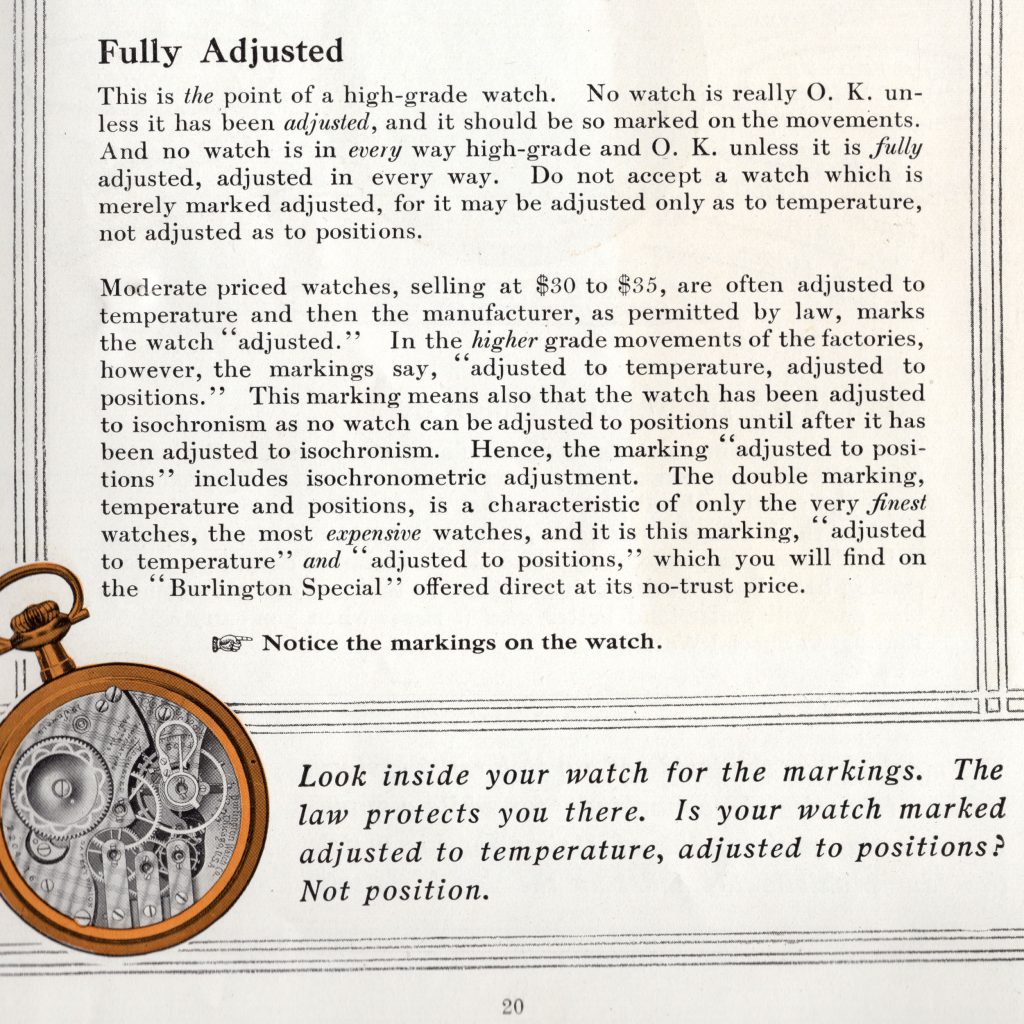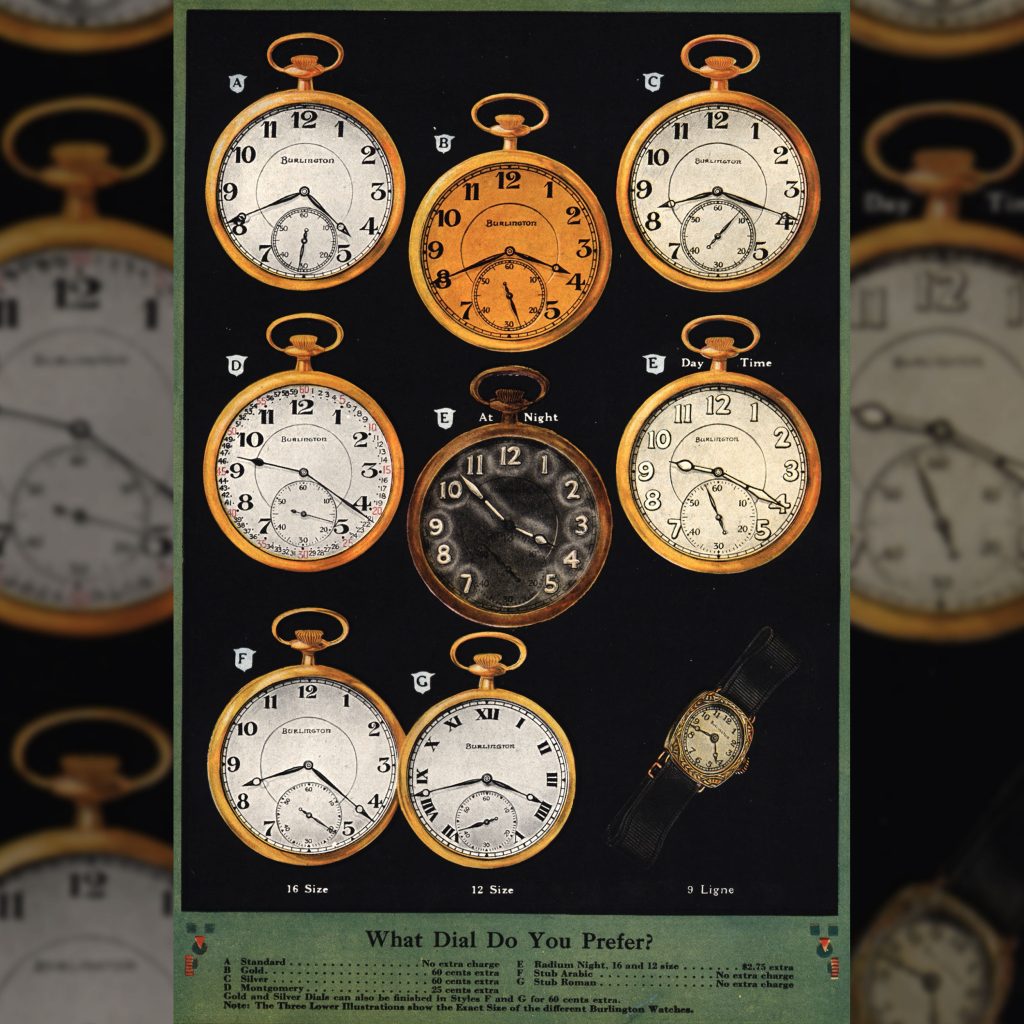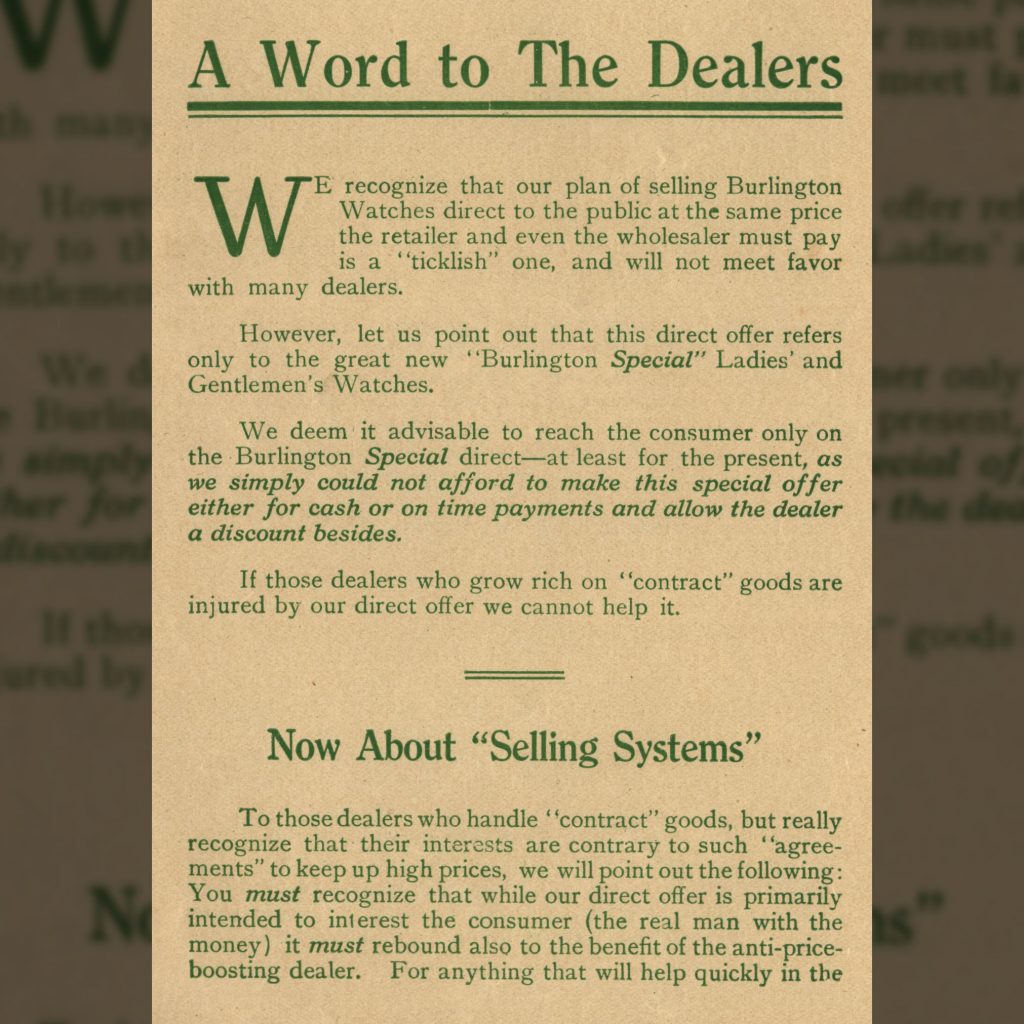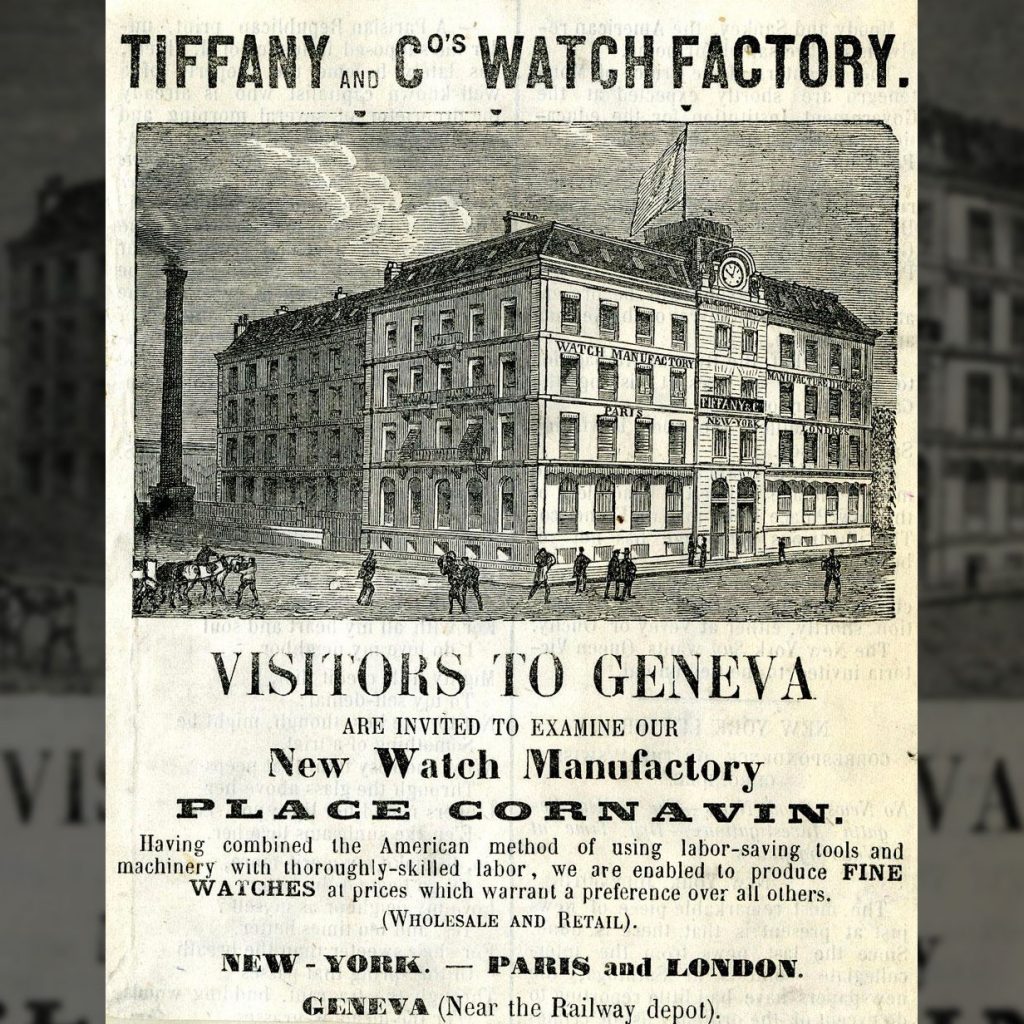Private Label Trade Names on American Pocket Watches: “Burlington Watch Co.” Part 15: Fully Adjusted

Since the second-generation 16-Size “Burlington Special” was adjusted to temperature, isochronism, and positions, the Burlington Watch Company could correctly claim the watch was “fully adjusted” by the accepted definitions during this era.
The c.1911 Burlington Watch Company catalog describes the “fully adjusted” status:
“Fully Adjusted. This is the point of a high-grade watch. No watch is really O.K. unless it has been adjusted, and it should be so marked on the movements. And no watch is in every way high-grade and O.K. unless it is fully adjusted, adjusted in every way. Do not accept a watch which is merely marked adjusted, for it may be adjusted only as to temperature, and not adjusted as to positions.
Moderate priced watches, selling at $30 to $35, are often adjusted to temperature and then the manufacturer, as permitted by law, marks the watch “adjusted.” In the higher grade movements of the factories, however, the markings say, “adjusted to temperature, adjusted to positions.” This marking means also that the watch has been adjusted to isochronism as no watch can be adjusted to positions until after it has been adjusted to isochronism. Hence, the marking “adjusted to positions” includes isochronometric adjustment. The double marking, temperature and positions, is a characteristic of only the very finest watches, the most expensive watches, and it is this marking, “adjusted to temperature” and “adjusted to positions,” which you will find on the “Burlington Special” offered direct at its no-trust price.”
While the Grade 185 Burlington watch was adjusted to three positions, various American watch factories offered finer watches that were adjusted to five and six positions. So, while “fully adjusted” ticks the necessary boxes for each type of adjustment, the level of adjustment was not comparable to the premium watches for sale in the United States.
The marking “Adjusted to Temperature and Positions” intentionally obfuscates the level of positional adjustment, while finer watches were explicitly marked with the number of positions during this era. However, this discrepancy did not prevent the Burlington Watch Company from equating the “Burlington Special” to the most expensive watches on the market.



